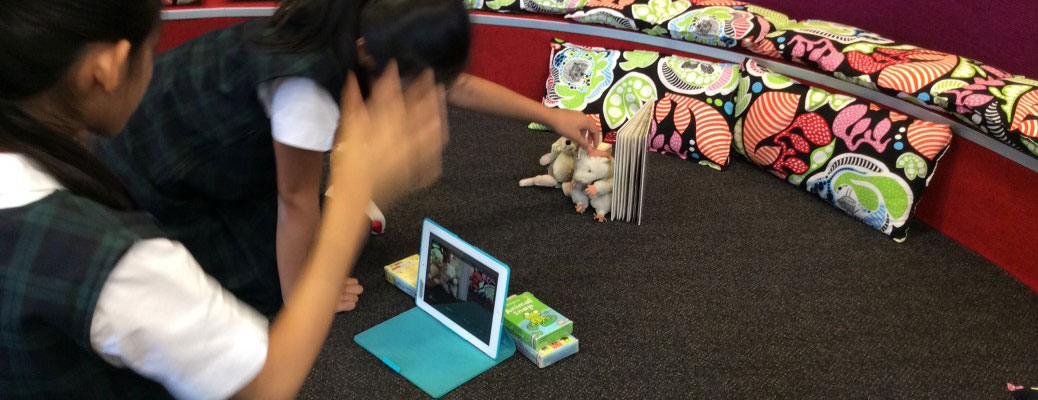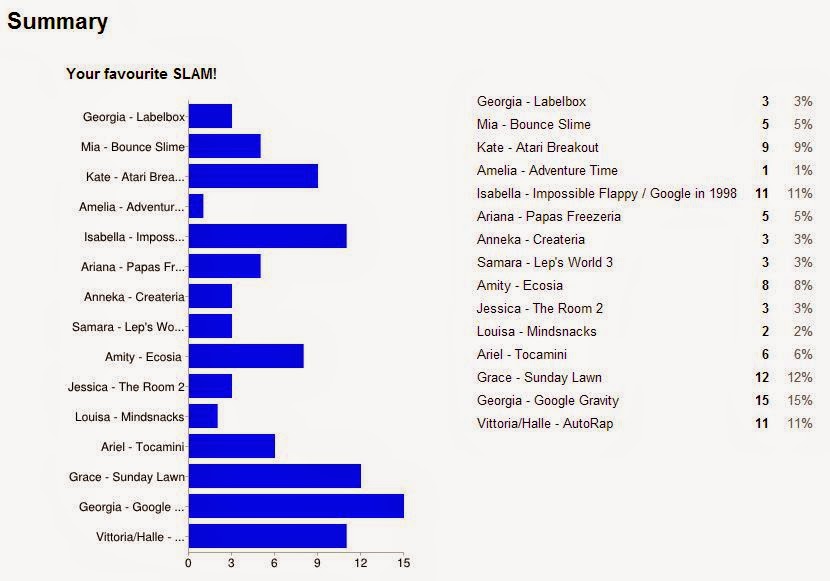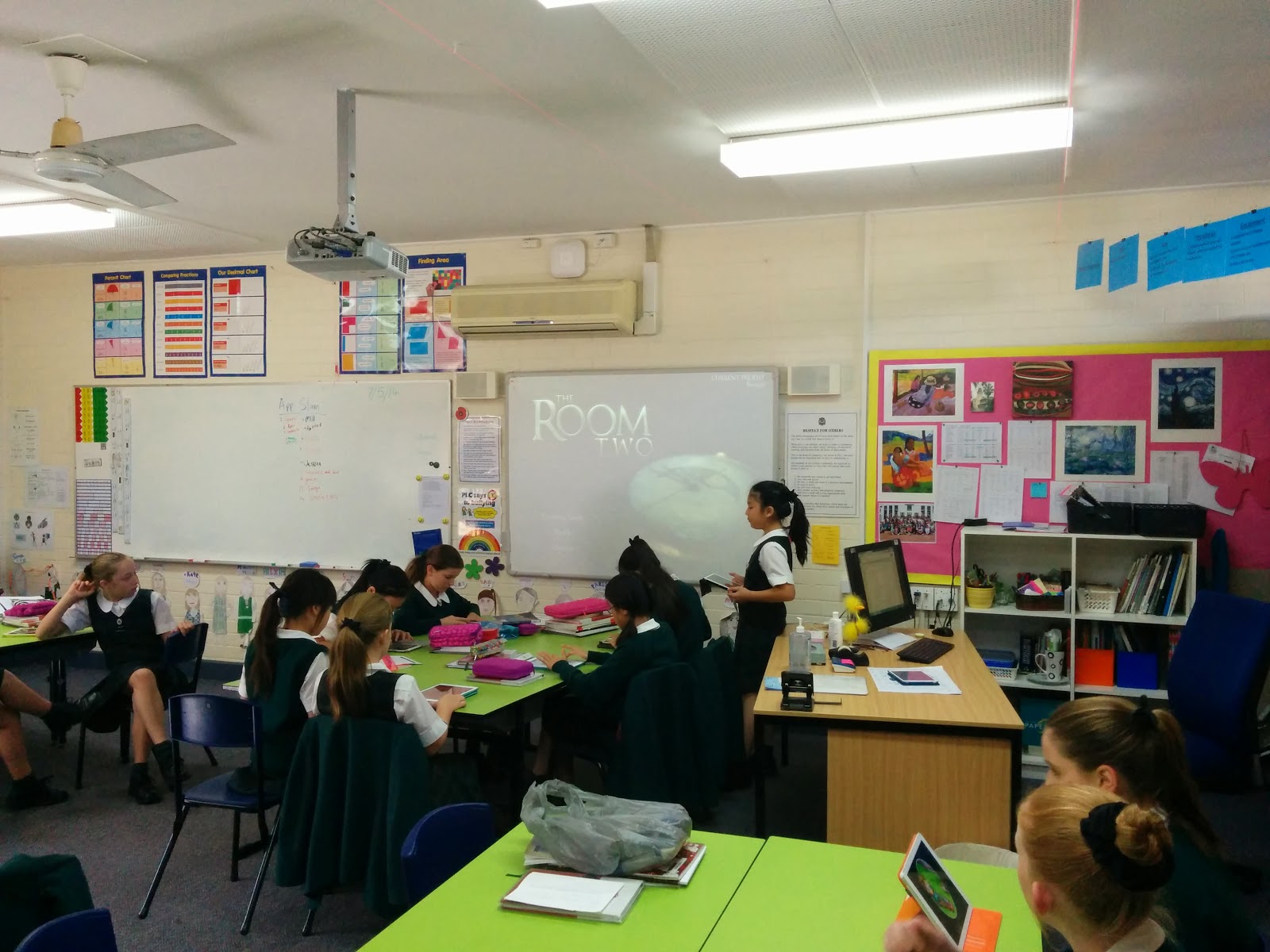I’ve been doing some work recently with a school that’s using iPads with their kids, and was asked to give a talk on the topic “The place of iPads in teaching and learning”. This post is just a bit of thinking out loud about that question.
Let me start by saying that I think the iPad is an amazing piece of technology. I dispute the common claim about iPads just being “consumption devices”. That’s a load of nonsense. Used wisely, iPads open up incredible opportunities for creativity. This point was driven home during my recent 365 project, The Daily Create, where I made a creative “thing” every day during 2014. Although this project wasn’t specifically based on using an iPad, the truth is that at least 80% of what I came up with over the course of the year was made on an iPad. Whether it was photo editing, making graphics, editing movies, composing music, building animations and 3D objects, or even just writing, the iPad was a perfectly credible tool for creation. And of course the actual management of the Daily Create project via a blog was mostly also all done on the iPad. So I know that the iPad can help people do amazing things.
Of course, that’s not to say it’s not also a great consumption device. For reading eBooks, watching videos, listening to podcasts or music, browsing the web, playing games and so on, the iPad is a convenient, intuitive easy-to-use device that, for the most part, “just works”.
So yes, I like the iPad. But just because you can do certain things on a device does not necessarily mean it’s the best device to be doing them on. So the iPad, as a tool, needs to be kept in that perspective. While it’s capable of most things, it’s great at some and not so good at others.
For example, I’m typing this post on a Chromebook. Why not an iPad? Well, as much as I like iPads, I prefer the writing and editing experience on a device with a real keyboard. I like the extra screen area, the ergonomics of sitting it comfortably on my lap, and having a physical non-modal keyboard. Could I type a piece of writing like this on an iPad? Sure I could (and have), but if given a choice I prefer to pick the tool that works best for me for that given task.
This is one of the reasons my school has gone down the path of having a combination of both iPads and Chromebooks. There are times when one is simply a better option than the other. They both have such unique strengths, and to exclusively choose one over the other tends to just highlights the weaknesses of each. That said, if you only have a choice of one or the other, either will be perfectly fine.
So back to the original question… “what is the place of iPads in teaching and learning?” It’s a loaded question really, because it begs the bigger question, “what is the place of technology in general in teaching and learning”. And to take it a step further, I think you should probably be asking the much bigger question “what is the point of teaching and learning anyway?” Thinking about the place that a particular technology might have in the teaching and learning process first requires you to think about what you’re trying to achieve in the first place.
Figuring out the place of iPads in teaching and learning should be pretty obvious once you know what you want teaching and learning to look like to start with. If you’re clear on the big idea of why, then seeing how is easy. You simply ask yourself whether this technology is helping you get closer to your goal or not. If it is, it has a place. It it doesn’t, then maybe not.
The school that asked me this question seems to have a pretty clear educational direction for what they are trying to achieve, and how they believe the teaching and learning process should look.
For a start, they want their learning to be transdisciplinary. The transdisciplinary model for teaching and learning is highly inquiry based and values collaboration, teamwork, curiosity and interconnectedness. It’s more than just thinking about a topic from different perspectives (that’s multidisciplinary) or by thinking about a topic by combining different subjects together like maths and science (that’s interdisciplinary). The idea of making the learning transdisciplinary involves bringing together multiple subject areas in such a way that the learning transcends the curriculum and becomes more than just the sum of its parts. If you’re a PYP school this should all sound quite familiar as it forms the foundation of that program. By taking a transdisciplinary approach the aim is to bring a more authentic, open-ended, personalised, contextual learning experience to each student.
Threaded through this core model for learning is a highly inquiry-based approach, a strong belief in differentiation according to student needs, flexible learning paths, and a fundamental goal for students to build their own learning through a Constructivist approach.
Would an iPad help support that kind of learning? Yeah, I think it would.
Steve Jobs once described computers as a “bicycle for the mind”, a metaphor borrowed from a study on locomotive efficiency in animals. Apparently for humans, walking is incredibly inefficient. Other animals can travel much further with far less energy. Steve observed how humbling it was for humans to be placed so far down the efficiency scale compared to other animals. However, he observed, if you allow a human to use a bicycle they become the animal with the most efficient form of locomotion of all. The larger point is that the right tool can make a big difference to what we are capable of.
Being given an opportunity to learn on your own terms, in ways that make sense to you, about things that interest you the most, forms the foundation of great learning. But without an effective tool to help, you’ll be like a human without a bicycle. You’ll probably get there, but it will take so much more work than it should.
So all of that pondering just leads me to my main idea, that giving a student an iPad (or any other piece of technology that helps them think more efficiently) can be a powerful thing. I think we intuitively know that, but it sometimes helps to step back and think about why we know it. And I think the “bicycle for the mind” idea is a pretty decent metaphor for why technology in the classroom can help support the kind of learning that we want. It can helps reduce the friction in curiosity, wonder, creativity and inquiry, and makes that process more efficient.
On the most basic level, having a device in the hands of a student that places them one click away of the sum of all human knowledge is in itself a pretty amazing advantage. (and one that no generation before them has ever had, by the way). We talk a lot about these devices helping students “connect, collaborate and communicate” so the simple idea of just being able to “look stuff up on the Internet” may not sound very impressive. But even though this might not be the wow factor that makes these devices “revolutionary and magical”, it’s still a pretty useful thing! To be able to look up a word, find a definition, peruse a map, verify a fact, ask a question or see a picture of something – instantly – is amazing. Don’t underestimate the power of that!
If you’re running a classroom based on an inquiry model, the iPad truly can act as that “bicycle for the mind” machine that helps a curious kid instantly connect to any fact or statistic they need to keep inquiring. iPads are transdisciplinary in the sense that they don’t silo information into arbitrary subjects. A query is a query. Curiosity does not have to limit itself to whether something is “science” or “maths” or “art”. Picking up an iPad and asking “OK Google, what type of lettuce is used in a Caesar salad?” and finding out that it is Romaine lettuce, and then wondering why it was named Caesar salad, or where it was invented, or whether it’s less fattening than a regular salad, or how you make a crouton, or the million and one other questions that might spring to mind as your questions cascade from one to the next… that’s just one small reason why technology makes sense in an inquiry based classroom.
Of course it’s much more than that though. You can wonder something, learn about it, and respond to it by making something with that information. It can be the tool by which a student can respond to their own curiosity. An iPad is amazing because it is a not one thing. It’s a notebook, a camera, a recording studio, a stopwatch, an atlas, a sketchbook, an editing suite, a music synthesizer, an artroom. It lets you compose, create and explore ideas. It’s screen instantly changes to become whatever tool you need it to be. There is really nothing else like it in that respect.
Using an iPad you can publish a short story, compose a soundtrack or produce a film clip. You can build a 3D model of a house, record a timelapse of a science experiment, or add augmented reality to a poster. There are literally millions of apps in the App Store so whatever you might want to do, you can almost guarantee “there’s an app for that”.
Finally the iPad is an incredible tool for communicating and collaborating, from having access to email, to messaging, to videoconferencing, to cloud computing. The world truly can be your oyster. You can collaborate with amazing cloud-based tools that let students form crosscultural, transdisciplinary teams to work on projects that are authentic, meaningful and real.
Of course, in reality none of this is terribly new. In 1971, Seymour Papert and Cynthia Solomon published a paper titled “20 Things to do with a Computer” in which their key assertion was that computers are capable of doing so much more if we allow them to be used creatively, and that the real reason to introduce computers into schools is to empower students. If a computer (or an iPad) is not being used to give agency to student learning then we have missed the whole point of having them.
Introducing computers (or iPads) into classrooms is not about better forms of testing students or NAPLAN preparation or math drills. It’s not about data management, not about saving money, not about impressing parents and not about keeping up with the school down the road. It’s about giving students agency and independence to take control of their own learning. And with that simple goal usually comes a whole lot of change. Sometimes quite painful change, but change that has to happen.
Adding technology to a classroom without reimagining how that classroom works, and rethinking what your students can do because of that technology, is a waste of time and money. Providing technology to students gives them an opportunity to do not just the same old things they’ve always done, except now with a shiny new tool… No. we now have an incredible opportunity to do entirely new things that were never possible before, using an amazing array of digital tools designed to create, and reinventing the way the way we think about teaching and learning.
Giving students iPads and not making fundamental shifts in how we teach and learn would be like giving them that bicycle for their minds, but then expecting them to push it and walk along beside it.If they are to get the true potential from that bicycle you need to let them get on it, get the wind in their face and ride the damn thing.
Featured image “Speedy Bike” by Till Krech via Flickr. CC BY.




